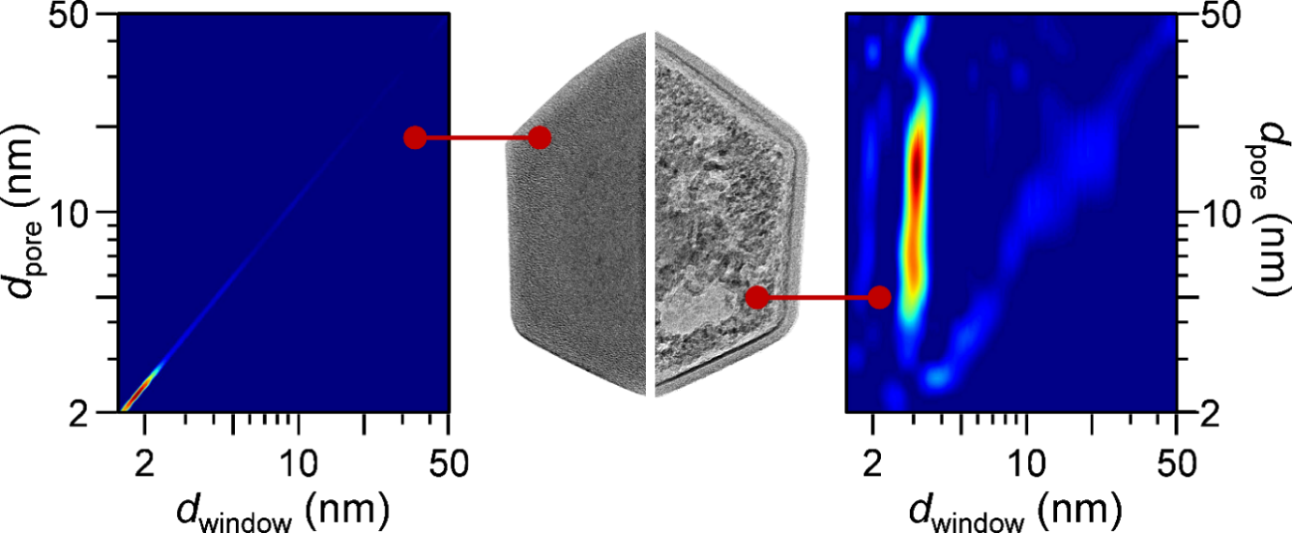Mapping the birth and evolution of pores upon thermal activation of layered hydroxides
The porosity of layered hydroxides can be greatly enhanced by thermal activation.1 Despite intense interest in the associated structural transformations, porosity changes have been almost exclusively described in terms of primitive bulk descriptors (surface area, pore volume, average pore size), providing limited insight into the pore architecture (i.e., the geometry, location, and connectivity of the pores). Here, we map the variations in porosity upon thermal activation of well-crystallized Mg(OH)2 and isostructural layered double hydroxide (LDH, [M2+1-xM3+x (OH)2]x+(An-x/n)·mH2O) materials through novel characterization approaches as transmission electron microscopy (TEM) coupled with in situ heating, positron annihilation lifetime spectroscopy (PALS), and differential hysteresis scanning (DHS) by high-resolution argon sorption (Figure 1).2,3 Despite exhibiting comparable surface area enhancements, arising from the formation of micro- and mesoporosity, striking differences in the structure of the developed pore networks for both materials are observed. As visualized by TEM, the substitution of trivalent metals like aluminium into the brucite-like sheets restricts the growth and improves the thermal stability of the pores, which form abundantly throughout the sample. Quantitative analysis by DHS reveals that the geometry of mesopores in the most highly porous samples is significantly constricted. Complementary insights are obtained by PALS, which evidences the asynchronous development of micro- and mesopores and readily distinguishes differences in the transport properties. The complexity of the pore evolution demonstrated by this approach illustrates the scope for improving mechanistic understanding in the design of porous materials derived from layered hydroxides.

Figure 1 Multi-technique approach to track pore evolution upon thermal activation of layered hydroxides.
[1] G. Fan, F. Li, D. G. Evans, X. Duan, Chem. Soc. Rev. 2014, 43, 7040.
[2] Q. Wang, D. O’Hare, Chem. Rev. 2012, 112, 4124.
[3] R. Warringham, S. Mitchell, R. Murty, R. Schaublin, P. Crivelli, J. Kenvin, J. Pérez-Ramírez, Chem. Mater. 2017, 29, 4052.